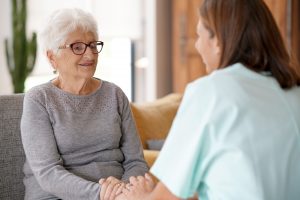How Stroke Recovery and Prevention Start with Simple Steps
|
Reading time: 9 minutes
|

Key Takeaways
- Understanding Strokes: A stroke happens when blood flow to the brain is blocked or disrupted, which can cause brain damage. Types of strokes include ischemic strokes (caused by blood clots), hemorrhagic strokes (caused by bleeding), and transient ischemic attacks (mini-strokes), which are warning signs of future strokes.
- Prevention and Recovery: You can lower your stroke risk by exercising regularly, eating a healthy diet, and avoiding smoking or heavy drinking. Medications to manage blood pressure or prevent blood clots also play an important role in both prevention and recovery.
- Living After a Stroke: Recovery involves therapies like physical or speech therapy and making healthy lifestyle changes. Personalized care plans, support from professionals, and small, steady efforts can help survivors regain independence and enjoy meaningful lives.
Heart disease and stroke remain major health problems in the United States. The Centers for Disease Control and Prevention (CDC) reports that about 647,000 Americans die from heart-related issues every year. Strokes are also a leading cause of long-term disability, affecting millions of individuals and their families.
Facing life after a stroke can feel overwhelming, but learning about the risks and making smart, proactive choices can help create a more positive path forward.
What Is a Stroke?
A stroke happens when blood flow to the brain is blocked or reduced, stopping brain cells from getting the oxygen and nutrients they need to work. This can cause serious harm to the brain and body, depending on how long the blood flow is disrupted and how severe the blockage is.
There are three main types of strokes:
- Ischemic Stroke: This is the most common type and happens when a blood clot blocks or narrows a blood vessel in the brain. Conditions like high blood pressure or high cholesterol often cause this type of stroke.
- Hemorrhagic Stroke: This type occurs when a blood vessel in the brain bursts, causing bleeding. The pressure from the bleeding can harm brain cells and surrounding tissue.
- Transient Ischemic Attack (TIA): Also called a “mini-stroke,” a TIA happens when blood flow to the brain is briefly reduced. Symptoms may go away quickly, but a TIA is often a warning sign of a future, more severe stroke.
The effects of a stroke depend on which part of the brain is affected and how quickly medical help is received. Damage can range from mild problems like temporary weakness to serious challenges with speaking, moving, or remembering things. Acting quickly to get treatment can reduce the risk of long-term problems.
Who Is at Risk?
Strokes can happen to anyone, no matter their age or background. While they are more common in older adults, children and younger people can have strokes too.
- Lifestyle Choices: Smoking, drinking too much alcohol, eating unhealthy foods, and not exercising increase the risk of stroke. Making healthier choices can lower this risk.
- Family History and Health Conditions: Having a family history of strokes or conditions like diabetes, high blood pressure, or heart disease also raises the risk. Regular checkups and managing these conditions can help prevent strokes.
Recognizing the Signs of a Stroke
Knowing the signs of a stroke and acting quickly can save lives. The FAST test is an easy way to identify stroke symptoms and take immediate action.
The FAST Test
Each letter in FAST stands for a symptom to check for:
- Face: Look for drooping or uneven movement on one side of the face. Ask the person to smile and see if their smile looks uneven.
- Arms: Ask the person to raise both arms. If one arm drifts downward or they can’t lift it, this may be a sign of muscle weakness.
- Speech: Have the person say a simple sentence, like “The sky is blue.” Listen for slurred or jumbled speech.
- Time: If you see any of these signs, write down the time the symptoms started and call 911 immediately. Acting quickly can improve the chances of recovery.
The FAST test is a simple tool that can help you recognize when someone might be having a stroke. Quick action is key to reducing long-term damage and supporting recovery.
Other Symptoms to Watch For
Some strokes may show symptoms that aren’t covered by the FAST test. These include:
- Difficulty Walking: Sudden loss of balance or coordination can make it hard to walk steadily.
- Severe Headaches: A sudden, intense headache with no clear cause could indicate a stroke, especially for hemorrhagic strokes.
- Vision Problems: Blurred or double vision, or trouble focusing with one or both eyes, may also signal a stroke.
If you notice any of these symptoms in yourself or someone nearby, call 911 immediately. Emergency responders can provide care quickly, increasing the chances of a better outcome.
Prevention
Lowering the chances of a stroke starts with understanding how your choices affect your health. By making simple lifestyle changes and working with your doctor, you can protect your body and enjoy a more active, healthy life.
Adopt a Healthy Lifestyle
- Exercise Regularly
Staying physically active helps your heart and blood vessels stay strong. Regular exercise improves blood flow and lowers the risk of blood clots. Activities like walking, swimming, or yoga are excellent ways to stay active and keep your body healthy. - Eat a Balanced Diet
A healthy diet supports strong blood vessels and reduces problems like high cholesterol or obesity.
Focus on eating whole grains, lean proteins, fruits, and vegetables. Avoid foods with too much sugar or unhealthy fats. Foods rich in fiber also help manage blood pressure and cholesterol, two key factors in stroke prevention.
Avoid Harmful Habits
- Limit Alcohol
Drinking too much alcohol can raise blood pressure, increasing the risk of strokes. Drinking in moderation helps protect your heart and blood vessels. - Quit Smoking
Smoking damages your blood vessels and makes it easier for clots to form. Stopping smoking improves your circulation and boosts both your heart and lung health.
Consider Medications
- Manage High Blood Pressure
High blood pressure is one of the main causes of strokes. Medications can help control blood pressure, protecting your blood vessels and lowering your risk. - Prevent Blood Clots
For people at higher risk of ischemic strokes, blood clot medications can be an effective way to prevent blockages. These treatments improve circulation and reduce the likelihood of a stroke. Consult your doctor about whether blood clot medications are right for your health needs.
Living After a Stroke
Recovering from a stroke takes time and involves physical, emotional, and medical changes. By focusing on rehabilitation and making healthy choices, stroke survivors can regain independence and reduce the risk of having another stroke.
Rehabilitation and Recovery
Rehabilitation is an important part of recovery. It helps stroke survivors regain abilities that may have been affected, such as movement, speech, and daily activities.
- Physical Therapy: Helps improve strength, balance, and coordination with guided exercises.
- Occupational Therapy: Teaches skills for daily tasks like dressing, cooking, or writing to regain independence.
- Speech Therapy: Supports those who have trouble speaking or swallowing.
Each therapy plan is customized to match the survivor’s needs and goals, making the recovery process more effective.
Recovery Needs Depend on Stroke Severity
- Mini-Strokes (TIAs): Recovery may need less therapy but focuses on lifestyle changes to prevent future strokes.
- Major Strokes: These often require longer rehabilitation with more intensive therapy. In some cases, ongoing support is needed for months or even years to regain muscle control and mobility.
Knowing what to expect can help survivors and caregivers set achievable goals and track progress over time.
Maintaining a Healthy Lifestyle
- Healthy Eating
Eating foods rich in nutrients and fiber, like vegetables, whole grains, and lean proteins, supports recovery. Avoid foods with too much salt, sugar, or unhealthy fats. - Regular Physical Activity
Gentle exercises, such as walking or swimming, improve blood flow and strengthen the heart. A doctor or therapist can recommend the best activities based on your recovery needs. - Medications to Prevent Future Strokes
Certain medications can help lower blood pressure and prevent blood clots, reducing the chance of another stroke. For example, medications like Cozaar can support recovery and improve vascular health. Talk to your doctor about treatments that are right for you.
Moving Forward After a Stroke
A stroke can feel overwhelming, but recovery is possible. Many stroke survivors rebuild their lives and enjoy meaningful, fulfilling experiences. With proper care, support, and healthy changes, life after a stroke can be a time of growth and resilience.
Living a Full Life After a Stroke
Recovery looks different for everyone, but the goal is the same: to regain independence and improve quality of life. A combination of medical care, rehabilitation, and lifestyle adjustments helps open new possibilities.
With patience and effort, survivors can return to everyday activities and reconnect with hobbies and loved ones. Simple tasks like gardening, cooking, or spending time with family offer both physical and emotional benefits. Taking small, manageable steps toward rebuilding routines can bring comfort and joy.
Seeking Personalized Support
Every recovery journey is unique, and getting professional guidance ensures that care meets individual needs. Personalized recovery plans may include:
- Medical Oversight: Regular checkups to monitor progress and adjust medications.
- Rehabilitation Services: Therapy to improve movement, speech, or daily tasks.
- Emotional Support: Counseling or support groups to help survivors and families cope with emotional challenges.
Working closely with healthcare professionals allows survivors to better understand their progress and discover strategies that work best for them.
Building Hope and Confidence
Recovery is about more than healing; it’s about creating a new path forward. Each small success in therapy or daily life adds to a sense of confidence and hope. Strength and determination help stroke survivors overcome challenges and find renewed purpose.
Support is always available for those navigating life after a stroke. Seeking help, setting goals, and celebrating every milestone are important steps toward a brighter future.
Resources and Support for Stroke Recovery
Recovering from a stroke involves physical and emotional changes, but having the right information and support can make a big difference. Whether you’re looking for guidance on medications, recovery tips, or lifestyle changes, reliable resources are available to help.
Find Answers to Common Questions
If you need help with ordering medications for your recovery or lowering stroke risks, visit our FAQ page. This page answers common questions about managing prescriptions, finding trusted online pharmacies, and getting your medications safely and easily.
Get Professional Support
Personalized care is an important part of recovery. Working with healthcare professionals ensures that your plan fits your unique needs. Here are some options for support:
- Medical Experts: Doctors and pharmacists can recommend treatments to lower blood pressure, prevent blood clots, and reduce the risk of another stroke.
- Rehabilitation Specialists: Physical, occupational, and speech therapists help rebuild strength, regain independence, and improve daily activities.
- Mental Health Professionals: Counselors and support groups provide emotional support for survivors and their families, helping them navigate the challenges of recovery.
Reaching out to professionals gives you the tools and guidance to move forward with confidence.
Information provided on this website is for general purposes only. It is not intended to take the place of advice from your practitioner







